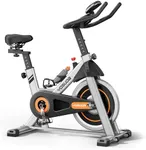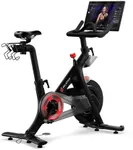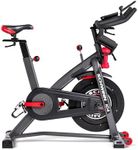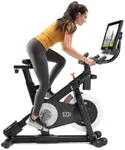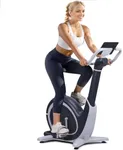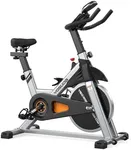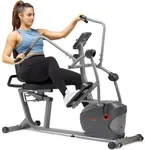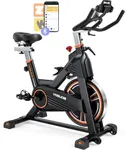Buying Guide for the Best Exercise Bikes
Choosing the right exercise bike can significantly enhance your fitness routine and help you achieve your health goals. When selecting an exercise bike, it's important to consider various specifications that will impact your workout experience. Understanding these key specs will help you make an informed decision and find the best fit for your needs.Type of Exercise BikeThere are three main types of exercise bikes: upright, recumbent, and indoor cycling (spin) bikes. Upright bikes are similar to traditional bicycles and are great for general fitness. Recumbent bikes have a reclined seat and provide more back support, making them ideal for those with back issues or limited mobility. Indoor cycling bikes are designed for high-intensity workouts and mimic the feel of road cycling. Choose the type that aligns with your fitness goals and comfort preferences.
Resistance LevelsResistance levels determine how challenging your workout will be. Exercise bikes typically offer magnetic, friction, or air resistance. Magnetic resistance is quiet and allows for smooth adjustments, making it suitable for home use. Friction resistance is more affordable but can be noisier and less durable. Air resistance increases with pedaling speed, providing a more dynamic workout. Consider your fitness level and the type of workouts you plan to do when choosing the resistance type and range.
AdjustabilityAdjustability refers to how easily you can modify the seat and handlebars to fit your body. Proper adjustability ensures a comfortable and ergonomic riding position, which is crucial for preventing injuries and maximizing workout efficiency. Look for bikes with multiple seat and handlebar positions, especially if multiple people will be using the bike. Test the adjustability to ensure it suits your height and body type.
Display and Console FeaturesThe display and console features provide important workout data such as time, distance, speed, calories burned, and heart rate. Advanced models may offer additional features like pre-set workout programs, Bluetooth connectivity, and compatibility with fitness apps. Consider what data and features are important to you for tracking your progress and staying motivated. A clear, easy-to-read display can enhance your workout experience.
Weight CapacityWeight capacity indicates the maximum user weight the bike can support. It's important to choose a bike that can comfortably accommodate your weight to ensure safety and durability. Check the manufacturer's specifications for the weight limit and select a bike that exceeds your current weight to allow for any future changes.
Flywheel WeightThe flywheel weight affects the smoothness and stability of your ride. Heavier flywheels provide a more consistent and fluid pedaling motion, which is beneficial for intense workouts. Lighter flywheels may be easier to start but can feel less stable at higher speeds. If you plan to do high-intensity or long-duration workouts, opt for a bike with a heavier flywheel for a better experience.
Footprint and PortabilityThe footprint refers to the amount of space the bike occupies. Consider the available space in your home and choose a bike that fits comfortably without overcrowding the area. Portability features like wheels can make it easier to move the bike around if needed. If space is limited or you plan to store the bike when not in use, look for a compact and portable model.
Comfort FeaturesComfort features include the quality of the seat, handlebar grips, and pedal design. A well-padded, adjustable seat and ergonomic handlebars can make a significant difference in your comfort during long workouts. Some bikes also offer additional features like built-in fans, water bottle holders, and media shelves. Prioritize comfort to ensure you enjoy using the bike and stick with your fitness routine.
